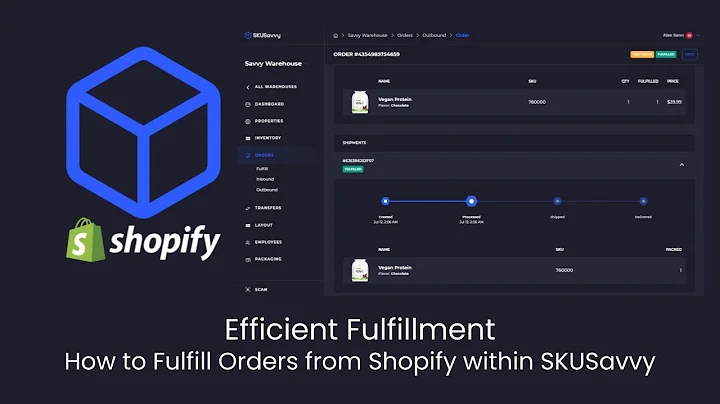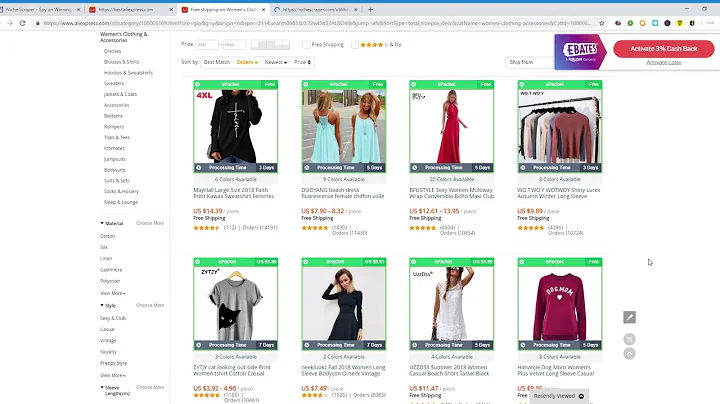Mastering Shopify Ecommerce Tracking with Google Tag Manager
Table of Contents
- Introduction
- Setting Up Google Tag Manager
- Creating a Google Tag Manager Account
- Copying the Google Tag Manager Container Code
- Adding the Container Code to Shopify
- Adding Google Tag Manager to the Order Confirmation Page
- Navigating to Shopify Settings
- Accessing the Order Status Page
- Adding the Google Tag Manager Container
- Excluding Checkout Pages from Referral Tracking in GA4
- Accessing Google Analytics Admin
- Configuring Tag Settings
- Listing Unwanted Referrals
- Installing the Google Channel App in Shopify
- Accessing Shopify Apps
- Searching for the Google Channel App
- Adding the App to Shopify Store
- Connecting the Google Channel App to Google Ads
- Connecting the App with the Google Ads Account
- Meeting the Requirements
- Agreeing to the Terms
- Checking the Data Layer Integration in Google Tag Manager
- Previewing the Google Tag Manager
- Verifying Data Layer Events
- Configuring Google Tag Manager to Send Ecommerce Data to GA4
- Creating a GA4 Configuration Tag
- Adding a GA4 Event Tag
- Testing the Tags
- Checking Ecommerce Events in GA4
- Accessing Google Analytics Admin
- Navigating to DebugView
- Verifying Ecommerce Events
- Publishing Changes in Google Tag Manager
- Conclusion
Setting Up Google Tag Manager for Shopify Ecommerce Tracking
In today's digital landscape, it is crucial to accurately track ecommerce events to gain valuable insights into customer behavior and optimize marketing strategies accordingly. Google Tag Manager offers a convenient solution for implementing and managing various tracking codes on your website, including Shopify stores. By following a few simple steps, you can set up Google Tag Manager for Shopify ecommerce tracking and start collecting valuable data for analysis.
Introduction
As an ecommerce business owner, tracking purchases and other ecommerce events on your Shopify store is essential for understanding your customers and improving your marketing efforts. Google Analytics provides powerful tools to gather this data, and to make the tracking process more streamlined and efficient, Google Tag Manager can be integrated with your Shopify store. In this guide, we will walk you through the process of setting up Google Tag Manager for Shopify ecommerce tracking, step by step.
1. Creating a Google Tag Manager Account
Before you can start setting up Google Tag Manager for your Shopify store, you need to have a Google Tag Manager account. If you don't have one already, go to the Google Tag Manager website and create an account by following the simple registration process. Once you have created your account, you will be prompted to create a container for your Shopify store.
2. Copying the Google Tag Manager Container Code
Once you have set up your Google Tag Manager account and created a container for your Shopify store, you need to copy the container code. In your Google Tag Manager account, navigate to the container you created for your store. At the top of the container page, you will see the container ID. Click on the container ID to view the container code. Copy the container code to your clipboard.
3. Adding the Container Code to Shopify
To add the Google Tag Manager container code to your Shopify store, you need to access the "Online Store" section of your Shopify admin dashboard. From the dashboard, click on "Themes" and select "Actions" from the drop-down menu. Then, choose "Edit Code" to access the code editor.
Once you are in the code editor, locate the "theme.liquid" file, which is used to create all the pages on your Shopify store. Paste the Google Tag Manager container code as the first thing after the "head" tag in the "theme.liquid" file. If you have already added the container code to the "theme.liquid" file, you do not need to add it again.
4. Adding Google Tag Manager to the Order Confirmation Page
In order to track ecommerce events on the order confirmation page of your Shopify store, you need to add the Google Tag Manager container code to the "order status page" in the Shopify settings. To do this, navigate to the "Settings" section in your Shopify admin dashboard. From there, select "Checkout" and scroll down to the "Order Status Page" section.
Check if there is any existing code under the "Additional Scripts" section. If you find any code, make sure to review it before replacing or removing it. If you find that Google Tag Manager has already been added, including a custom data layer, it is recommended to remove the existing code. If the section is blank, paste the Google Tag Manager container code that you copied earlier under the "Additional Scripts" section.
Conclusion
Setting up and configuring Google Tag Manager for Shopify ecommerce tracking is a vital step in collecting accurate and comprehensive data about your customers' behavior on your store. By properly implementing Google Tag Manager and integrating it with Shopify, you can gain valuable insights that will help you optimize your marketing strategies and ultimately improve your ecommerce business's performance. By following the step-by-step instructions outlined in this guide, you can ensure that your Shopify store's ecommerce events are accurately tracked and measured in Google Analytics.






















